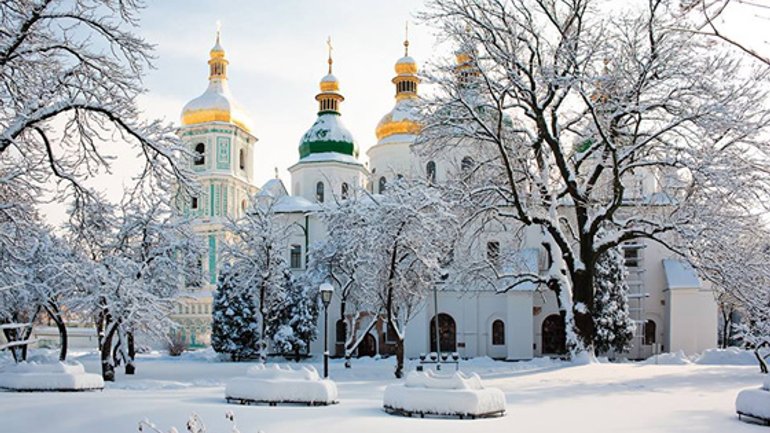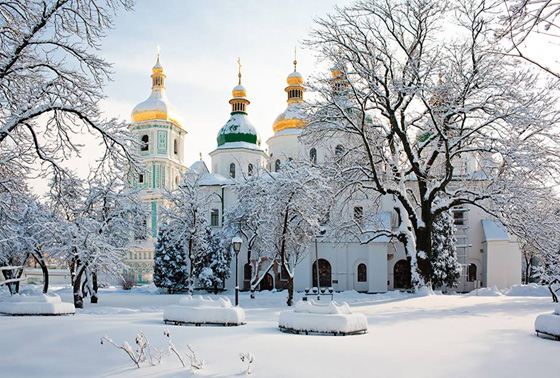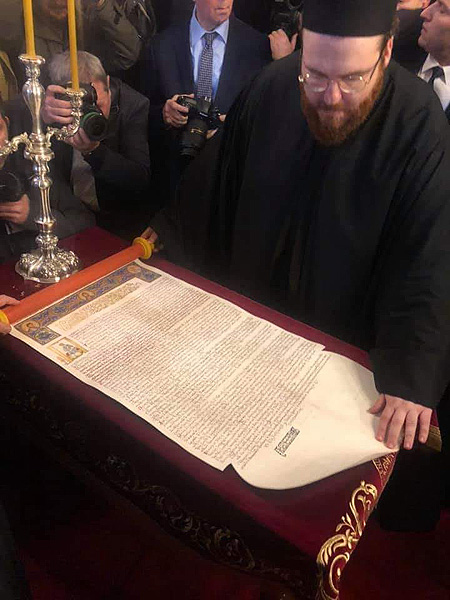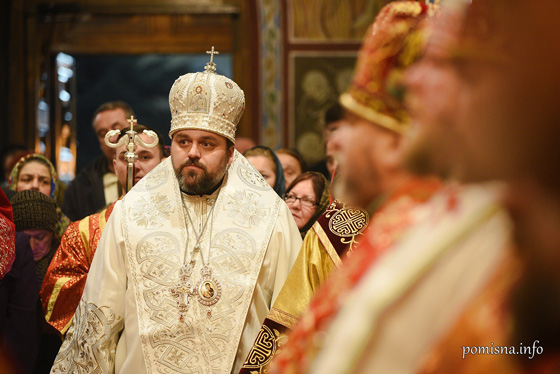Ukrainian Orthodox Church 2019 – results of the year

To get an insight into the events of the past year, some retrospection is required. In 2018, the Ecumenical Patriarchate canceled its decision to temporarily transfer the right to ordain the metropolitans of Kyiv to the patriarchs of Moscow as the need for such a transfer ceased to exist, as well as due to Moscow's failure to comply with all the conditions of the transfer. The main conditions were as follows: 1) the metropolitans of Kyiv should first of all remember the patriarchs of Constantinople (since the Metropolis was not withdrawn from the Ecumenical Patriarchate), and only in second place – the patriarchs of Moscow (if they took part in the ordination of the metropolitans); 2) the election of the Metropolitan should be carried out by the clergy and laity of the Kyivan Metropolia.

However, the agreements with Moscow are not worth the paper on which they are written: as the state borders expanded, the Russian Empire absorbed other dioceses, metropolitans (including the autocephalous ones), and even an entire Patriarchate, absolutely asking no one at defiance of the canons. All this was motivated by the fact that a monolithic state should have the one Church. But every time Ukraine got out of direct political influence of Moscow, we tried to restore our own Church, independent from Moscow.
Constantinople undertook the third attempt to build a Ukrainian autocephaly in the most serious manner and in strict accordance with the canons. Having restored its Kyivan Metropolia, the Holy See invited all Ukrainian bishops to join it. The UOC-KP and UAOC joined it in full, while only two bishops transferred there from the ROC. However, despite the formal superiority, the ROC not only lost the status of the only canonical Church in Ukraine, of which it so boasted, it even lost the status of a canonical church as such. Thus, hierarchs of some local Churches continue to concelebrate with the hierarchs of the Moscow Patriarchate, but not because they consider them canonical Ukrainian bishops, but only because they had canonical ordinations. This was very clearly demonstrated by Metropolitan Alexander of Nigeria (Patriarchate of Alexandria) in a letter addressed to the Metropolitan Agafangel of the ROC in Ukraine, who is dubbed as “in Odessa” and not “of Odessa” - since the title "of Odessa" can only refer to a canonical bishop. In fact, this is exactly of what Patriarch Bartholomew warned Metropolitan Onufriy in 2018: if the Metropolitan does not come to the Unification Council, he loses the title of “Metropolitan of Kyiv” in the eyes of Ecumenical Orthodoxy.
However, if most of the hierarchs of the ROC took part in the unification process, the split in Ukrainian Orthodoxy, artificially and artfully supported by Moscow, would be finally eliminated.
Thus, from the very beginning of the year in Ukraine, the two Orthodox Churches co-exist in parallel: the OCU, which is canonical and Autocephalous, and the branch of the ROC in Ukraine. The bishops of the latter are considered valid, while not Ukrainian, but the bishops located in Ukraine.
Event No. 1 – Tomos
Probably, the presentation of the Tomos of autocephaly to the Orthodox Church of Ukraine on January 5 is a key event not only of the expiring year, but also of the last hundred years that separate us from the first attempt to obtain autocephaly. However, the Kremlin propagandists immediately tried to declare it "not real", the one that narrows the rights and turns the Ukrainian Church into an ordinary metropolis of the Patriarchate of Constantinople. Moscow, as usual, projects possible actions of its own on others. However, our Tomos is quite normal, similar to what the others have.

Here, the main success of ecclesiastical Moscow should be also noted. The Kremlin managed to impose their own discourse on almost the entire Orthodox world and convince the Primates of the Local Churches that they are entitled to accept or reject Constantinople's decision to grant autocephaly. To this end, such terms as “Pan-Orthodox consensus”, “reception of autocephaly” were introduced ... The saddest thing is that a number of theologians have actually begun to reason within this paradigm. But do we need to remind that neither “reception” nor “consensus” were ever referred to in all the other cases of autocephaly granted in the XIX-XX centuries.
The receipt of the autocephaly by the OCU gave hope to the Balkan Churches as well: both Metropolitan Michael of Montenegro and Metropolitan Petro of the Macedonian Orthodox Church said they expected the Tomoses for their Churches in the near future.
Event No. 2 – “10 Theses for the OCU”
In January, an extremely important grassroots initiative emerged - the movement "10 Theses for the OCU" - aimed at restoring conciliarity, renewal of parish life, greater participation of the laity in the life of the Church ... The voice of this initiative was heard: Metropolitan Epifaniy met several times with the leaders of the initiative, its participants were accepted onboard of various synodal bodies and invited to give lectures in the theological educational institutions.
This is an important difference between the OCU and the ROC, where the voice of the laity is not heard, and all decisions are made by only one person, and this person is not sitting in Kyiv, but in Moscow.
Event No. 3 – Attempt to bribe the Georgian Church
The" foreign Minister " of the ROC, Metropolitan Hilarion Alfeyev, tried to block the recognition of the OCU by the Georgian Orthodox Church. Suffice it to quote: “I cannot imagine that the Georgian Orthodox Church recognizes the autocephaly of the Ukrainian Church, created by the Patriarchate of Constantinople ... There are young bishops who openly or secretly call on the Patriarch to recognize the autocephaly of Ukraine, but I am sure that this will not happen ... The Georgian Orthodox Church occupies the sixth place in our Orthodox hierarchy, and we support it. In our diptychs, it ranks the sixth. And now, if the Patriarch of Constantinople is removed from the diptych, Georgia will take the fifth place. Whereas in the diptychs of the Ecumenical Patriarchate, Georgia is in the ninth place, and no one is going to revise it.”
Event No. 4 – Hierarchs of the Russian Orthodox Church fell under their own ban
The Synod of the ROC forbade its hierarchs to concelebrate with the Constantinople on September 14, 2018. However, on February 13, a solemn service was held in Varna, Bulgaria, to mark the 50th anniversary of Metropolitan John of Varna and Velikopreslav. In addition to the Bulgarian bishops, led by the Bulgarian Patriarch Neophyte, there were also a number of guests: Archbishop Theodosius of Tomsk (Romanian Orthodox Church), metropolitans of the “New Lands” Ioel of Edessa and Chariton of Elassona, Archbishop Abel of Lublin and Chelm (PAOC), Metropolitan Anthony of Boryspil, Chancellor of ROC in Ukraine, and Bishop Metodije of Diokleia (SOC).

Thus, Metropolitan Anthony (Pakanych) of the Moscow Patriarchate and Deputy Chairman of the Department for External Church Relations, Fr Mykola Danylevych, concelebrated with two metropolitans of the Patriarchate of Constantinople. The fact that Metropolitans Ioel and Chariton are hierarchs of the Patriarchate of Constantinople is specified on the official website of this Church.
Thus, Metropolitan Anthony falls under the ban of his own Church. However, he will not suspend himself in service. It remains to be stated that instead of following the gospel principle and giving an unambiguous answer (Matt. 5: 37), the disingenuous hierarchs of the Moscow Patriarchate are now coming up with excuses. “If this is not the case, then “yes” becomes “no”, and “no” becomes “yes”; it is clear that it comes from the devil, because when he tells a lie, he speaks of his own, and does not stand in the truth,” St. Gregory Palamas explains the position of the ROC.
The canonical inaction of Moscow in relation to Metropolitan Anthony only testifies to the insignificance of the decision to sever the Eucharistic communion. Not only the agreements with Moscow aren't worth the paper they are signed on – the very decisions of Moscow are not worth the paper.
Event No 5 – Filaret secedes into schism again
From the very beginning, Metropolitan / Patriarch Filaret was dissatisfied with the actions of Constantinople, either with regard to the Unification Council or with regard to the Tomos. In May, he finally spoke up and made several public statements, as well as held his own meeting, which was attended by several other bishops from Russia. Thus Filaret caused a new schism, which was intensified by the ordination of new bishops.
For the OCU, Philaret's departure means only one thing – the withdrawal of a very toxic hierarch, who was a stumbling block for many local Churches.
Event No. 6 – Serial recognition of the OCU
As it was already noted, the main achievement of Moscow’s ecclesiastical diplomacy regarding the OCU is the imposition of its own discourse on Local Churches. The Greek Church was the flagship of recognition, which was not actually necessary. The Synod of this Church confirmed the obvious: the right of the Mother Church - the Ecumenical Patriarchate – to grant autocephaly to its part – the Kyivan Metropolia. Thus the Greeks declared that Metropolitan Onufriy and the bishops who remained with him in subordination to Moscow were actually schismatics. That is why the clergy of the Greek Orthodox Church may be imposed canonical sanctions for concelebration with hierarchs of the ROC in Ukraine.
The next to recognize the OCU was the Patriarch of Alexandria, for which the wrath of the ROC befell the whole of Africa.
However, it is necessary to distinguish between the instances of openly declared recognition (by the Churches of Greece and Alexandria), and the recognition that actually occurred, that is, directly, by virtue of concelebration of the OCU hierarchs with the bishops of other Local Churches, or indirectly – by virtue of participation in the divine services, in which the name of Metropolitan Epifaniy of Kyiv was remembered (Antioch and Bulgarian Patriarchates). Moscow responded with a strong backlash to the cases of direct recognition, severing communion with those who declared their recognition of the OCU, while choosing not to respond to the cases of indirect recognition at all.
Thus, the OCU has already held a concelebration with the Archdiocese of Cyprus and the Orthodox Church of the Czech lands and Slovakia. The latter case is particularly remarkable, but not because the Bishop of this Local Church came to Kyiv himself, but because his Synod did not impose any sanctions against the “offender”, thus showing that it is possible to concelebrate with the OCU.

The Synod of the Polish Autocephalous Orthodox Church have adopted a pretty ambiguous position: it has stated that it supports the idea of Ukrainian autocephaly: "the Polish Autocephalous Orthodox Church is not opposed to granting autocephaly to the Church in Ukraine on the basis of dogmatic-canonical regulations effective for the whole Church, but not to a group of renegade dissenters", without specifying whom they consider dissenters in Ukraine.
In any case, the process of concelebrating and establishing official contacts with the OCU is underway and almost a half of the local Churches have been already involved therein.
Event No. 7 – Building a “parallel” Orthodoxy
Offended by the “Greek” Churches, Moscow began to take revenge, establishing “parallel” parishes on the territory of other local Churches, completely ignoring the principle of observance of the canonical territory. These actions have already affected Turkey (the territory of the Ecumenical Patriarchate), Greece, and Africa. That said, Fr Vsevolod Chaplin suggests to launch a private military campaign: “In Africa, we have something to rely on – friendly governments, business, PMCs.” All this, of course, accelerates the “self-withdrawal” of the Moscow Patriarchate from world Orthodoxy. Moreover, Moscow has not been supported in its self-isolation by any of the local Churches.
"When a horse is shoed, the toad stretches its paw" - based on this principle, the ROC also participates in the creation of “parallel” Orthodoxy. Thus, with the blessing of Metropolitan Pavlo Lebed, a parish of this entity was opened in Canada - on the territory of the local Orthodox Church of America, which received its Tomos from the Moscow Patriarchate. Thus, part of the Moscow Patriarchate, which is located in Ukraine, has shown its disrespect of this Tomos, of the one who issued it, as well as of the one to whom it was issued. But this means that the ROC must recognize either the split of consciousness (this condition has a beautiful Greek name), or that the autocephaly of the OCA is fake from the beginning.
What to expect next
The past year has highlighted two main areas of development. First, it is the recognition of the OCU, actual first, by virtue of concelebration of individual clergymen, and further at the level of Synodal decisions and concelebration of the Primates. Secondly, the transformation of the ROC into a mono-national church, on the model of the Armenian Apostolic Church, which has two Catholicosates – of Etchmiadzin and Cilicia, and two Patriarchates parallel to the analogous Orthodox ones – of Constantinople and Jerusalem, or the Coptic Church with two Patriarchates.
The Russian Orthodox Church would claim some "persecution", but in comparison with what the Serbian Church in Montenegro experiences, risking to lose pretty many churches, any statements about the persecution of the Moscow Patriarchate in Ukraine can only cause a skeptical smile.
The meeting of the Primates in Jordan announced by the Patriarch of Jerusalem in Moscow without the sanction of the Ecumenical Patriarch will turn into a “meeting of old colleagues”, and if sanctioned – into a “debriefing” of the Moscow Patriarchate, which means that Kirill Gundyaev will not go there.









